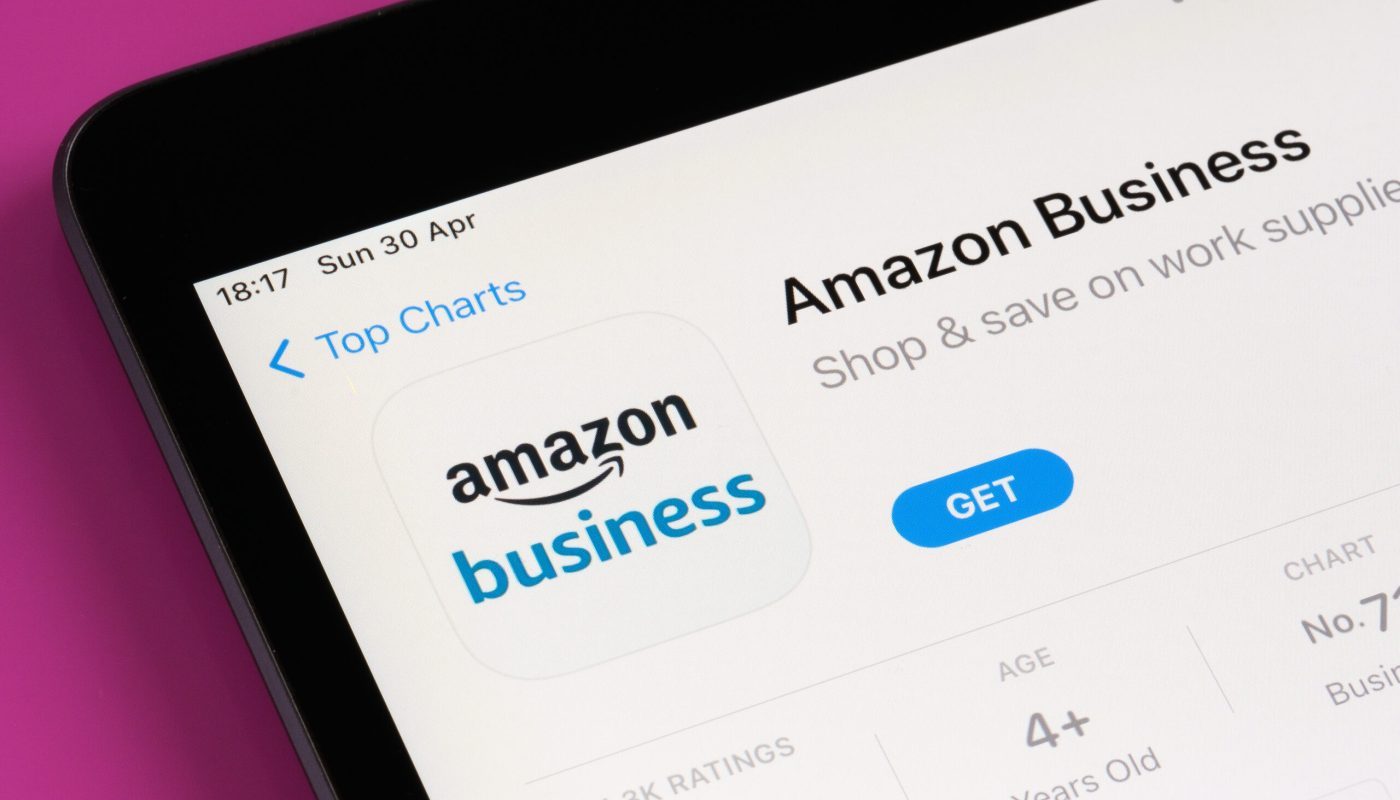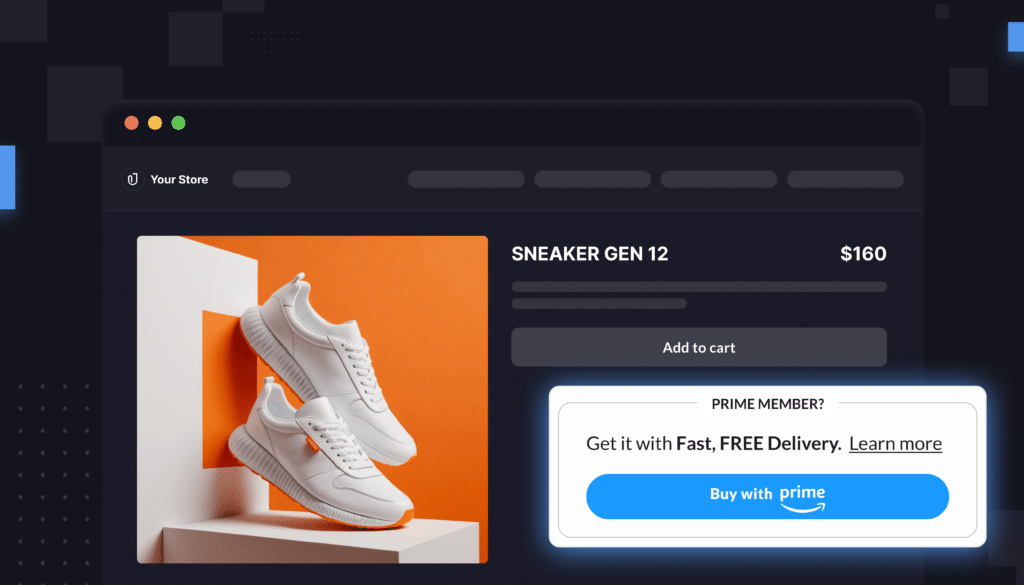There’s an easy way to sell your products in bulk: Amazon Business.
Amazon Business, Amazon’s business-to-business (B2B) platform, has existed since 2015. Though it has largely flown under the radar in the e-commerce world, it offers immense opportunities for many brands.
With Amazon Business, you can sell your products in bulk to corporate customers. Depending on your category, Amazon Business can offer a huge untapped market for your brand. Offer specialty discounts, track metrics, and run ads targeted to B2B customers.
But how do you know if selling on Amazon Business is right for you? And how do you reach—and track—business shoppers?
We break it all down for you below.
What kinds of shoppers are using Amazon Business?
Technically, Amazon Business is a separate marketplace from the regular Amazon.com marketplace. You need to create a business account to access it.
Amazon Business is designed for business customers of all sizes, whether they represent a major corporation or a small independent store.
Amazon claims that 80% of the Fortune 100 companies and 90% of the most populous local governments buy in bulk from Amazon Business. Plus, tons of senior living corporations, charities, non-profits, and faith groups use it, too.
How popular is Amazon Business?
Amazon Business first launched in 2015. Since then, it has grown quickly. In 2023, according to Amazon, $35 billion in bulk sales were transacted through Amazon Business.
That reflects an industry-wide trend. As more and more consumer spending shifts online, business spending is following—albeit more slowly.
Across the industry, B2B marketplaces are becoming far more common. Platforms like Faire, which focus on wholesale, are now standard. In 2022, for example, B2B e-commerce sales jumped 11.2%.
The vast majority of B2B sales still happen offline, however. The share of digital B2B sales is 10.3%, about half of what it is for retail sales—although certain categories, like electronics, have a much bigger digital B2B footprint.
Does Amazon Business offer Prime shipping?
Amazon Business does offer corporate shoppers a version of Amazon Prime, but it’s tailored specifically to the needs of B2B buyers.
Amazon’s shipping membership for business customers is called Business Prime. It functions a lot like regular Amazon Prime, but with the expectation that orders will be much larger than a typical retail purchase.
Business Prime is priced differently than regular Prime. It’s free for a single user, $179/year for up to 3 users, and all the way up to $10,099/year for a business with 100+ users.
How can I sell on Amazon Business?
Once they hit a certain scale, many brands want to target B2B customers. It’s usually a good tactic: Business customers often buy in bulk, which means they have a very high Average Order Value.
Amazon Business has particular appeal to brands that sell products in categories like:
- Electronics
- Office supplies
- Furniture
- Business, industrial, scientific supplies
Basically, any product that companies often buy in large quantities is a good candidate for Amazon Business.
To offer your products on Amazon Business, you have to join the Amazon Business Seller program. It’s easy—you just have to clear a few requirements before you can enroll.
Amazon only offers the Business Seller program to brands in Seller Central that achieve above-average performance metrics. You need to ensure that your products arrive swiftly and in good condition: Your order defect rate has to be below 1%, and your late shipment rate has to be below 4%.
You also need a cancellation rate below 2.5%.
How do I set pricing on Amazon Business?
Pricing is one of the core differentiators of Amazon Business. The B2B marketplace allows brands to create special pricing structures that are only available to corporate customers.
You can not only set a new per-product price for corporate shoppers, but you can also offer bulk discounts to encourage shoppers to order vast quantities of your product at once.
Amazon allows business sellers to create up to 5 pricing tiers. For example, a volume purchase of 5-9 products might net 5% off, a purchase of 10+ products might get 10% off, and so on.
Above those 5 tiers, if a corporate customer wants to order in an even higher volume, Amazon lets them request a custom price, to be negotiated directly with you.
How do I track my sales on Amazon Business?
Some brands, depending on what they sell, see enormous sales numbers on Amazon Business. It’s important to keep tabs on just how much revenue Amazon Business is driving.
Don’t worry too much if sales are low, however. How well you perform on Amazon Business often comes down to your product category. If your products are in categories that are not typically bought in bulk, such as beauty, you would probably only expect 2-5% of sales to come from business shoppers.
By contrast, industrial, scientific, and office supplies products might see as much as 50% of sales from Amazon Business.
To understand how you are performing on Amazon Business, navigate to your Business Reports —> Sales and Traffic. From there, unlock how many of your sales come from corporate customers.
Can I advertise on Amazon Business?
Amazon’s advertising platform does support ads targeted toward business shoppers—but in a limited way.
Namely, if you run Sponsored Display or DSP ads, you can target specifically people who are shopping with business. Amazon DSP, for instance, offers access to audience segments like:
- Anyone who subscribes to Amazon Business
- Small and medium businesses
- Businesses that viewed a top-200 selling B2B ASIN
By contrast, Sponsored Products and Sponsored Brands do not allow you to target a specifically business-focused audience.
But there are other tactics available. One popular way to do this is by running regular Sponsored Ads on keywords that suggest bulk purchases: for instance, “100 pack,” “in bulk,” and other similar potential searches.
A search for “toilet paper” is probably from a regular consumer, whereas a search for “bulk toilet paper” or “100-pack toilet paper” is most likely coming from a business owner.
What other tricks should I keep in mind?
At Intentwise, we have a few extra tips for sellers that are considering leveraging Amazon Business. We suggest that you:
Keep an eye on your competitors. If you don’t have an Amazon Business account, you can’t see what kinds of bulk offerings your competitors are making available.
It’s important to check the Amazon Business marketplace regularly, through a business account, to keep tabs. What are the pricing structures of your competitors? How are they leveraging their content to appeal to corporate shoppers?
Understand your business customers with Amazon Marketing Cloud. Want to understand how many of your sales come from bulk purchases? You can run a query in Amazon Marketing Cloud to identify bulk buyers of your products.
From there, Amazon Marketing Cloud makes targeted advertising easy. Once you’ve identified a group of shoppers who are regularly buying in bulk from you, you can re-target them in DSP by creating a custom audience.
Curious how Amazon Marketing Cloud works? Read more about running queries and creating custom audiences in our AMC Learning Hub. Our platform Intentwise Explore makes writing and scheduling queries in AMC easy, no SQL required.








